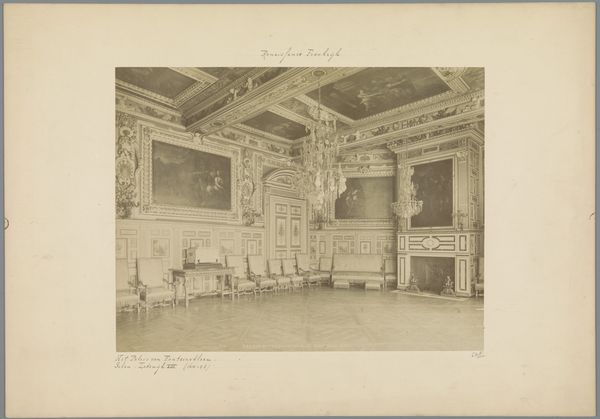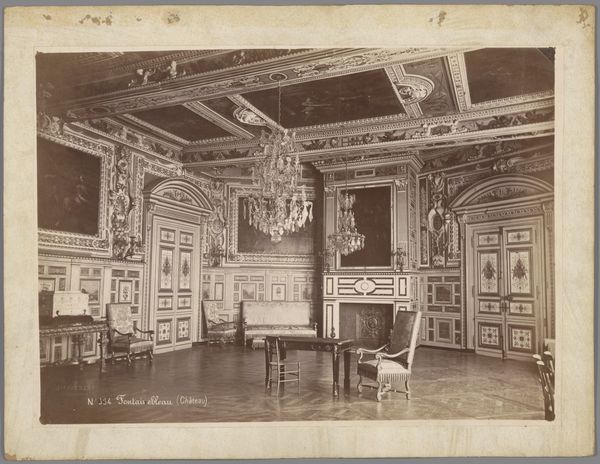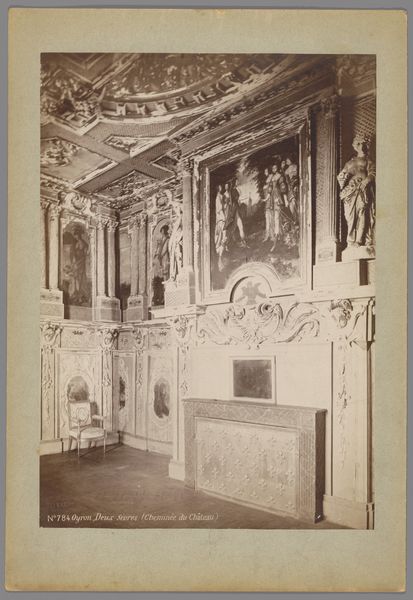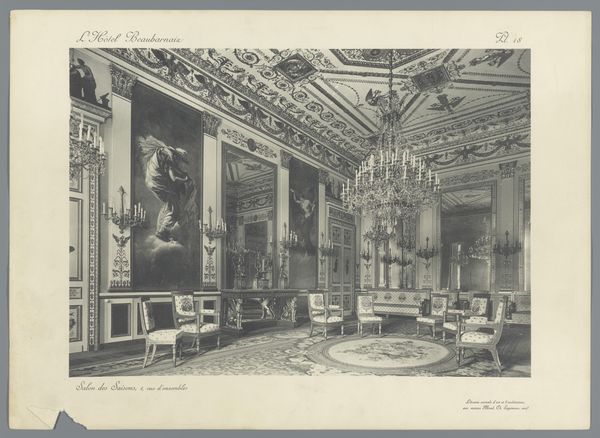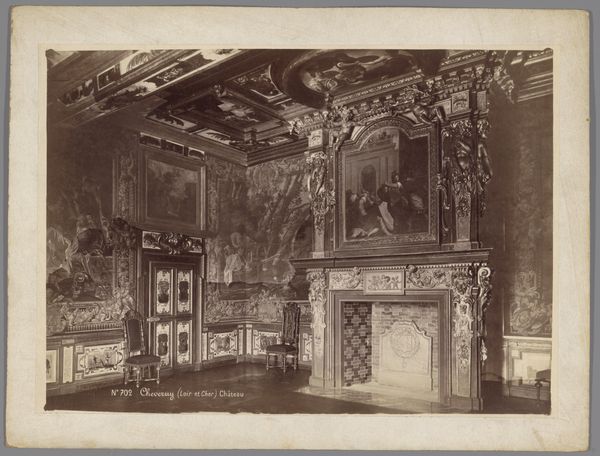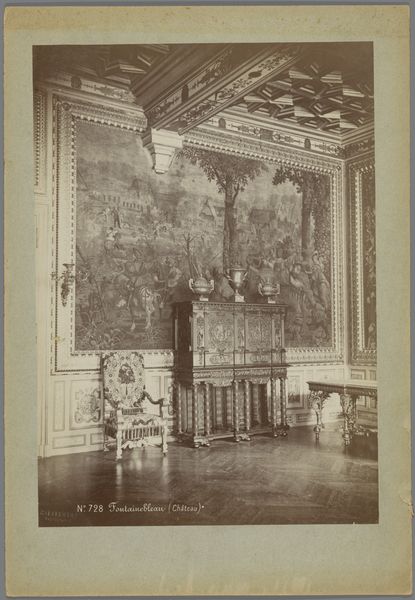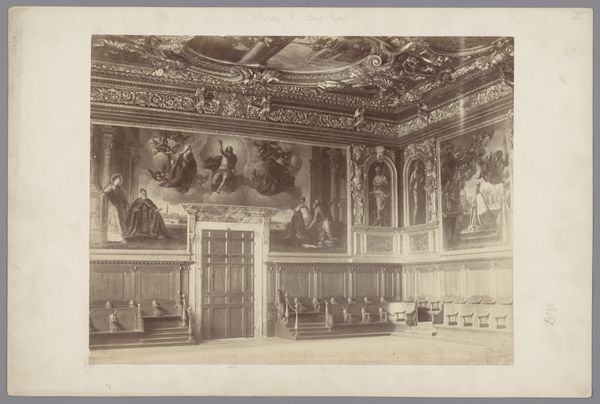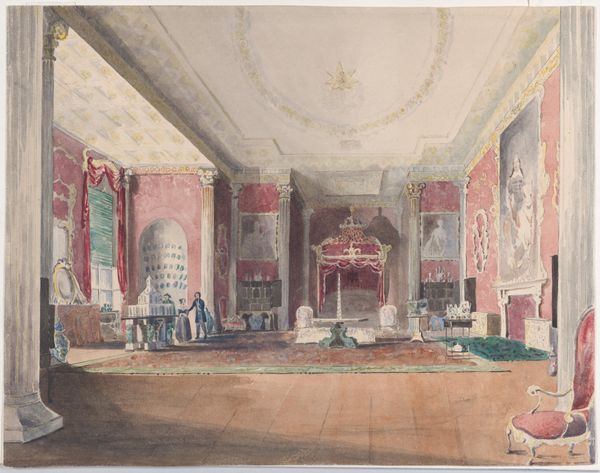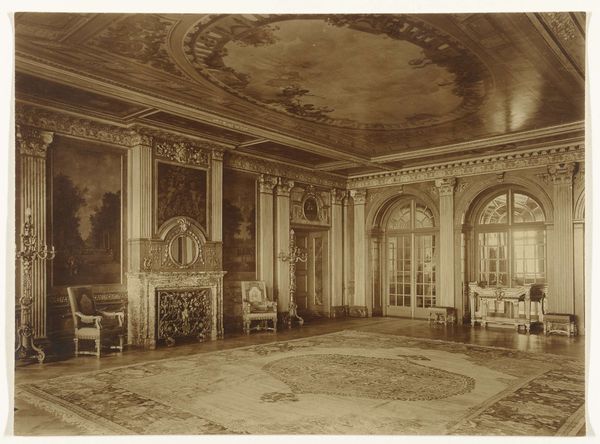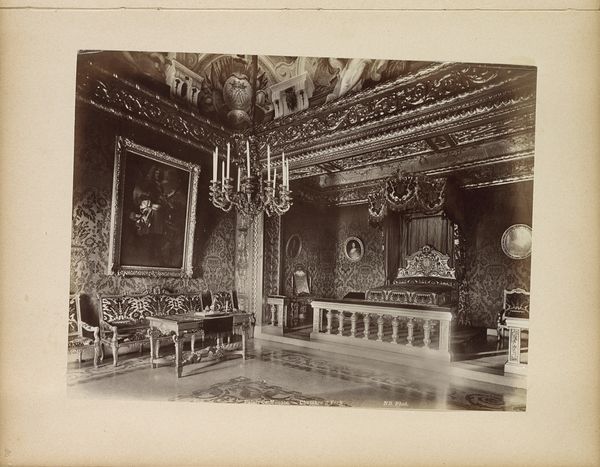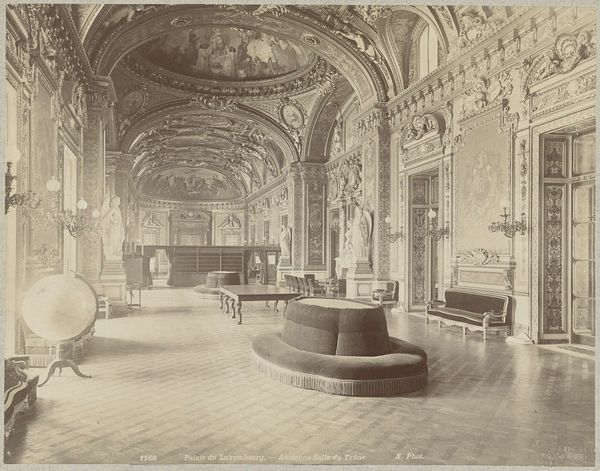
Interieur van de Grand Salon in het Kasteel van Cheverny c. 1875 - 1900
0:00
0:00
photography, albumen-print
#
portrait
#
16_19th-century
#
landscape
#
photography
#
19th century
#
genre-painting
#
albumen-print
Dimensions: height 268 mm, width 385 mm
Copyright: Rijks Museum: Open Domain
Curator: This albumen print by Médéric Mieusement, created sometime between 1875 and 1900, presents the interior of the Grand Salon in the Château de Cheverny. It’s a striking glimpse into 19th-century aristocratic life, currently held in the Rijksmuseum collection. Editor: My first thought is opulence and symmetry, the overwhelming amount of detail contained inside this single room, its somewhat softened quality of light making it all the more immersive. Curator: Indeed, notice the craftsmanship; every panel, every piece of furniture, is meticulously constructed, the photographer skillfully captured how labor, likely generational, has produced such a grand effect for a limited aristocratic clientele. The very materiality of the salon broadcasts a message of dynastic power. Editor: Look at the recurring motifs within the carved wood, these oval patterns echo across the panels and furniture. Don’t you think they almost evoke eyes, as if the very room is watching, observing centuries of inhabitants. The portraits certainly give that feeling, gazing down with the weight of ancestry. Curator: Fascinating idea! Beyond the visual impact of these "eyes", we might also ponder the use of specialized woodworking techniques. For example, what was involved in carving the intricate ceiling rosettes and reliefs in an era when labor relations differed vastly from today? Consider the master artisans who guided production but left without much personal acknowledgment. Editor: Perhaps, although those ceiling designs, for me, those rosettes resemble stylized suns, signifying enlightenment, prosperity, and the divine right of kings, constantly shining above the inhabitants. They become metaphors for order and aristocratic power that reflect France's societal hierarchy during this era. Curator: Yes, those are some interesting links, indeed. I'm stuck thinking of this room and how much value this family placed on handcrafted ornamentation—a true display of economic and artistic patronage. The Chateau's visual language also seems highly managed; in its day, this photo may have functioned almost as public relations—or estate planning inventory for later owners. Editor: Reflecting on the experience of the Chateau and this particular space and this image, it makes me realize the many ways material things accrue symbolic weight; and what we keep close as visual signifiers across our cultural and familial experiences. Curator: For me, seeing such painstaking detailing, so clearly rendered by early photographic techniques, emphasizes the connection between art production and the means by which objects have represented—and even embodied—social class over time.
Comments
No comments
Be the first to comment and join the conversation on the ultimate creative platform.

